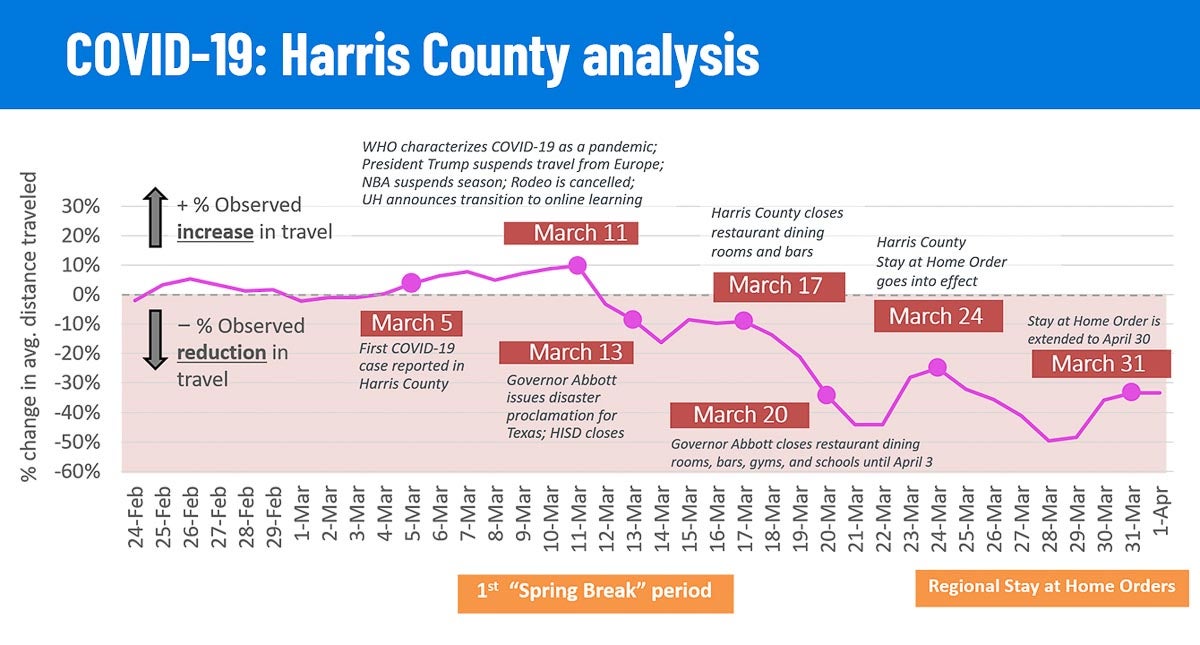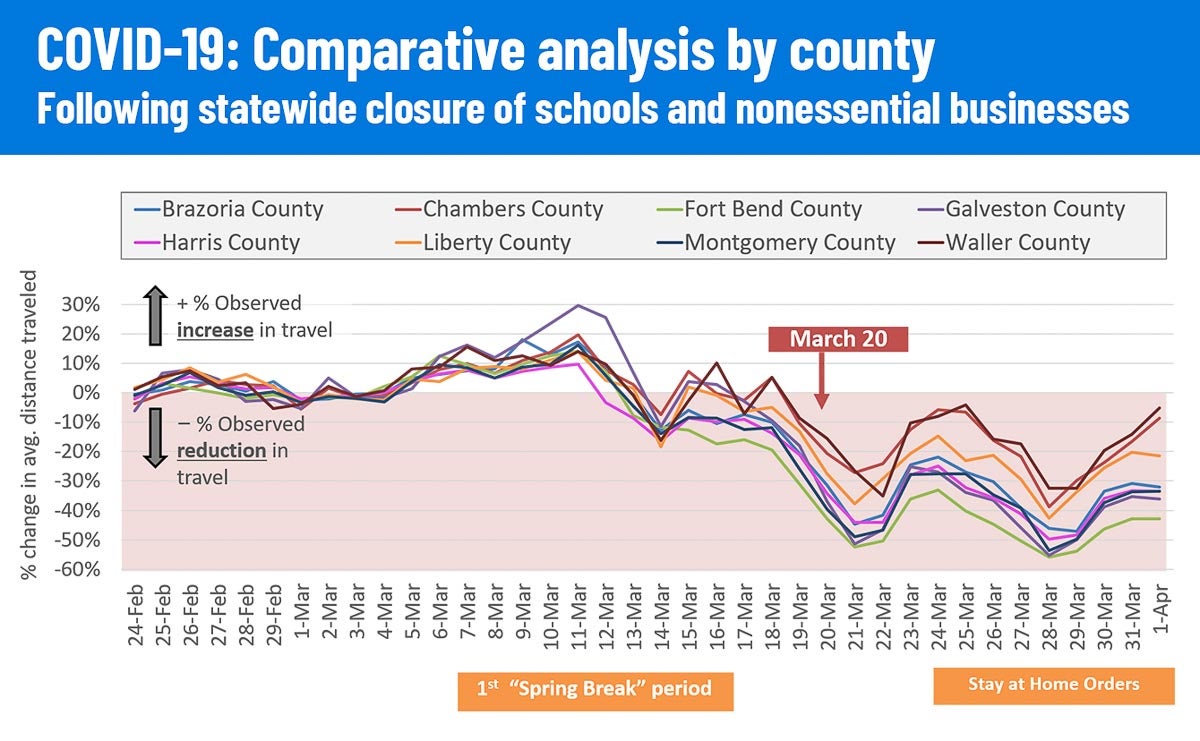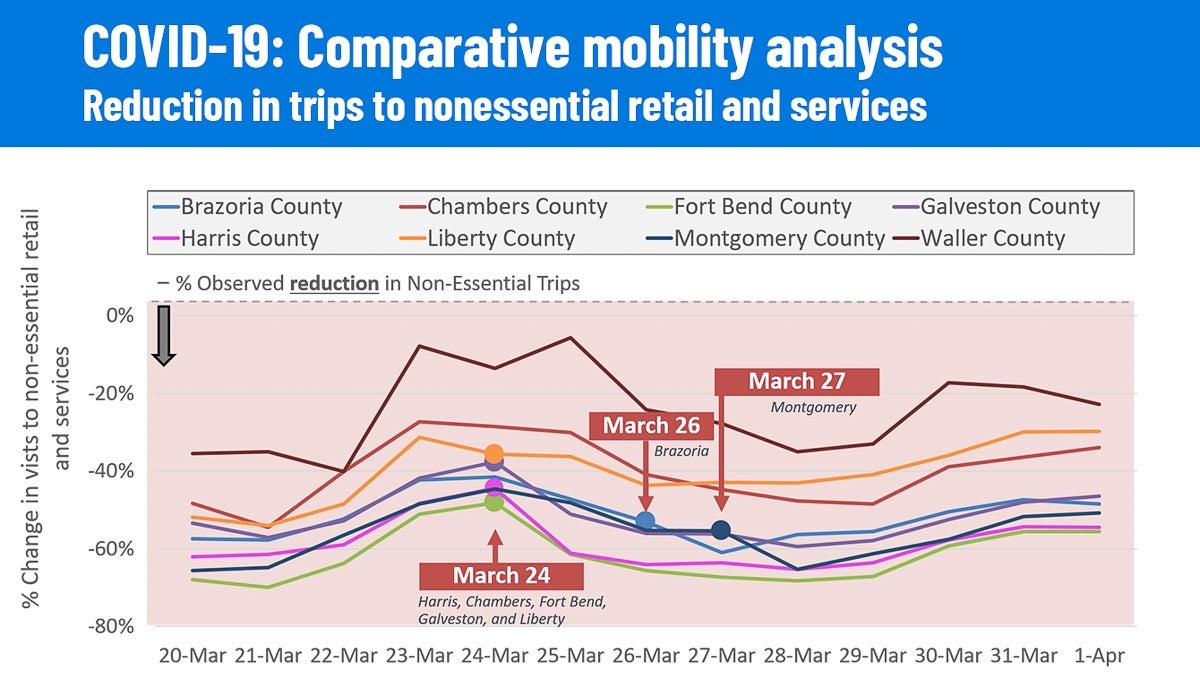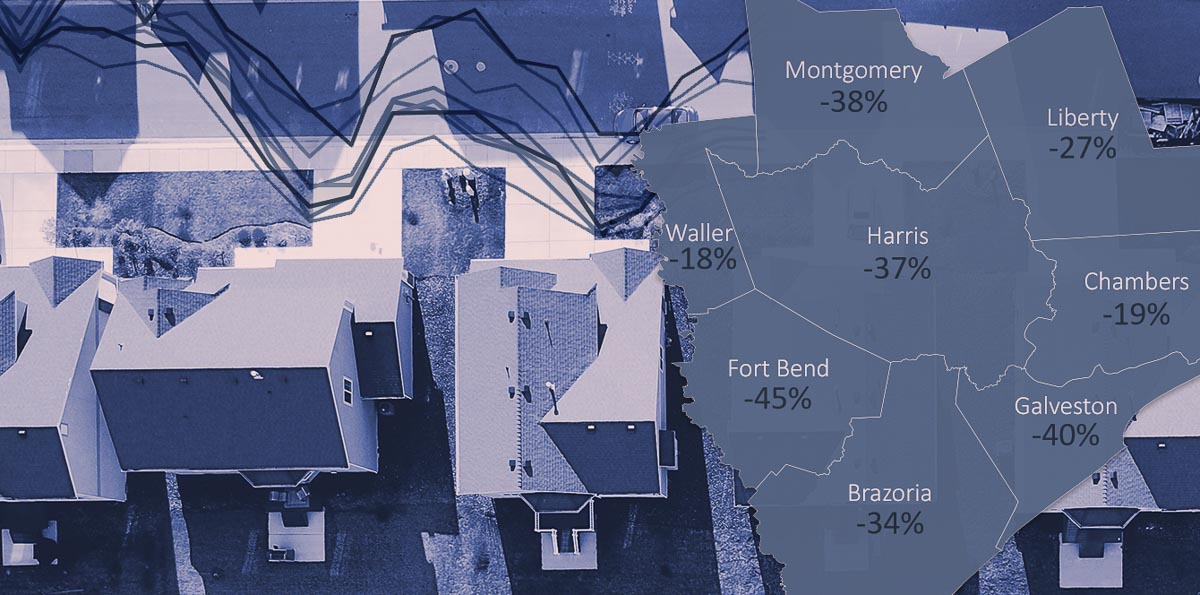As of Tuesday, statewide stay-at-home orders had been issued in all but eight American states to mitigate the spread of COVID-19. Texas’ 29 million residents were told to stay home beginning April 2.
Three of the eight holdouts — Wyoming, Utah and Oklahoma — have partial orders in effect. No full or partial orders have been issued to residents in five rural states — Arkansas, Iowa, Nebraska, North Dakota or South Dakota.
Earlier this week, the Kinder Institute’s Houston Community Data Connections showed that social distancing measures not only are effectively slowing the spread of the disease, they are saving lives. Based on epidemiologists’ COVID-19 models, the researchers estimate more than 4,500 lives were saved in Harris County between March 24 — the day the county’s stay-at-home order took effect — and April 6.
Our ongoing “COVID-19 and Cities” coverage examines the pandemic’s effects on Houston and other metropolitan areas, both now and once the outbreak is over.
Now, smartphone location data analyzed by the Houston Advanced Research Center (HARC) shows to what extent the region’s residents have reduced their average daily travel as a result of COVID-19.
The mobility analysis is part of a broader effort to study the environmental effects that stay-at-home orders and social distancing here and across the state will have on the Houston region.
HARC researchers Gavin Dillingham and Meredith Jennings are looking at data from Feb. 24–April 1 related to regional mobility, air quality and energy demand to determine the “pandemic’s short-term effects on quality of life, economic systems, infrastructure and the environment.”

Source: Houston Advanced Research Center
How COVID-19 has changed mobility in Harris County
According to data from the Unacast COVID-19 Location Data Toolkit, the average distance traveled in Harris County spiked on March 5, following the first reported case of COVID-19 in Harris County. The percentage change in average distance traveled peaked at 10% on March 11, the day the World Health Organization (WHO) characterized COVID-19 as a pandemic. That’s also the day President Donald Trump gave his Oval Office address and suspended travel from Europe to the United States.
The percentage change in average distance traveled fell to around -18% on March 14, then increased again to a level of -10% on March 15, plateauing till March 17 before dropping again over the next several days to -44% on March 20. March 17 was the date restaurants were restricted to take-out and delivery only and bars were closed in Harris County.
On March 22, travel went up again, peaking at -25% on March 24 — the day Harris County’s stay-at-home order went into effect. From there, travel decreased to the lowest level during the five-and-a-half-week period: a 50% reduction on March 28. It increased again to around -33% on March 31, the day Harris County’s stay-at-home order was extended to April 30, then leveled off.

Reduced travel in surrounding counties
HARC researchers also compared the rise and fall of the average distance traveled in other counties in the Houston metropolitan area: Brazoria, Chambers, Liberty, Fort Bend, Montgomery, Galveston and Waller counties.
The patterns were similar for all counties, with a larger spike seen in Galveston County between March 8 and March 11 — peaking at a 30% increase — before falling again after the WHO’s pandemic characterization of the disease. That spike could be related to spring break travel. Since March 16, the average distance traveled has been highest in Chambers and Waller counties and lowest in Fort Bend County. Travel in all counties already was trending downward when Gov. Greg Abbott closed schools and nonessential businesses, such as in-dining restaurants, bars and gyms. Since then, the greatest reduction has been in Fort Bend County (-45%) and lowest in Waller County (-18%) — the only county that didn’t tell residents to stay home.
Chambers, Fort Bend, Galveston and Liberty counties issued stay-at-home orders on March 24. Brazoria County followed suit on March 26 and Montgomery County did the same on March 27.

When comparing the change in trips to nonessential businesses by county since March 20, HARC researchers found the decrease was smallest in Waller County. For example, on March 25, there was a decrease of approximately 7% compared to a 61% drop in Fort Bend and Harris counties the same day.
Nonessential trips, according to the researchers, included those to “restaurants, department and clothing stores, jewelers, consumer electronics stores, cinemas and theaters, office supply stores, spas and hair salons, gyms, car dealerships, hotels and hobby shops.”

Methodology
HARC researchers used data derived from the Unacast COVID-19 Location Data Toolkit, which uses location intelligence from data collected through mobile applications, GPS, mobile device Bluetooth connections, and Wi-Fi connections to understand customer movement patterns. Data was provided free of charge by Unacast through the Data for Good program.

